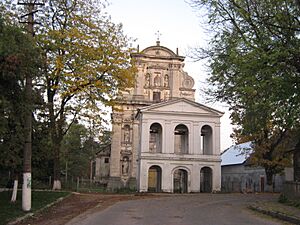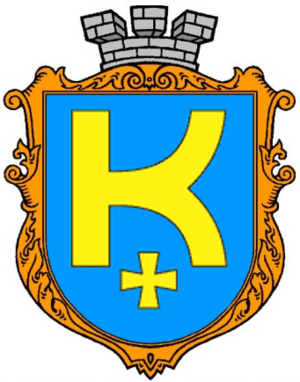Komarno facts for kids
Komarno is a small city located in western Ukraine. It's part of the Lviv Oblast (which is like a province) and the Horodok Raion (a district). About 4,000 people call Komarno home.
This city has a long history, as it was founded way back in 1324. In the heart of Komarno, you can find an old Polish Catholic Church. There's also a very old wooden church that holds ancient and special icons. The peaceful Vereshytsia River flows right through the town, adding to its charm.
Komarno is also known as the origin of the Komarno Hasidic dynasty, a special group within Hasidic Judaism.
Contents
Where is Komarno Located?
Komarno is found in the western part of Ukraine. It's situated within the Lviv Oblast, which is one of Ukraine's larger administrative areas. Think of an oblast like a state or province in other countries.
The city is also part of the Horodok Raion. A raion is a smaller administrative division, similar to a county or district. This helps organize the region into smaller, manageable parts.
A Glimpse into Komarno's History
Komarno has been around for a very long time! It was officially founded in the year 1324. This means the city has seen centuries of changes and developments.
Over the years, many different cultures have influenced Komarno. This long history is reflected in the old buildings and traditions you can still find there today.
What to See in Komarno
If you visit Komarno, you'll find some interesting historical buildings. In the center of the city, there's an old Polish Catholic Church, often called a Kostel. It's a beautiful example of old architecture.
Another special place is an ancient wooden church. This church is unique because it houses very old and important religious paintings called icons. The Vereshytsia River also flows through the town, offering a nice natural feature.
Interesting Facts About Komarno
Komarno is known for being the origin of a specific group called the Komarno Hasidic dynasty. Hasidic Judaism is a branch of Judaism that began in the 18th century.
A "dynasty" in this context refers to a line of spiritual leaders or rebbes who trace their lineage and teachings back to this town. It's an important part of the city's cultural and religious heritage.




